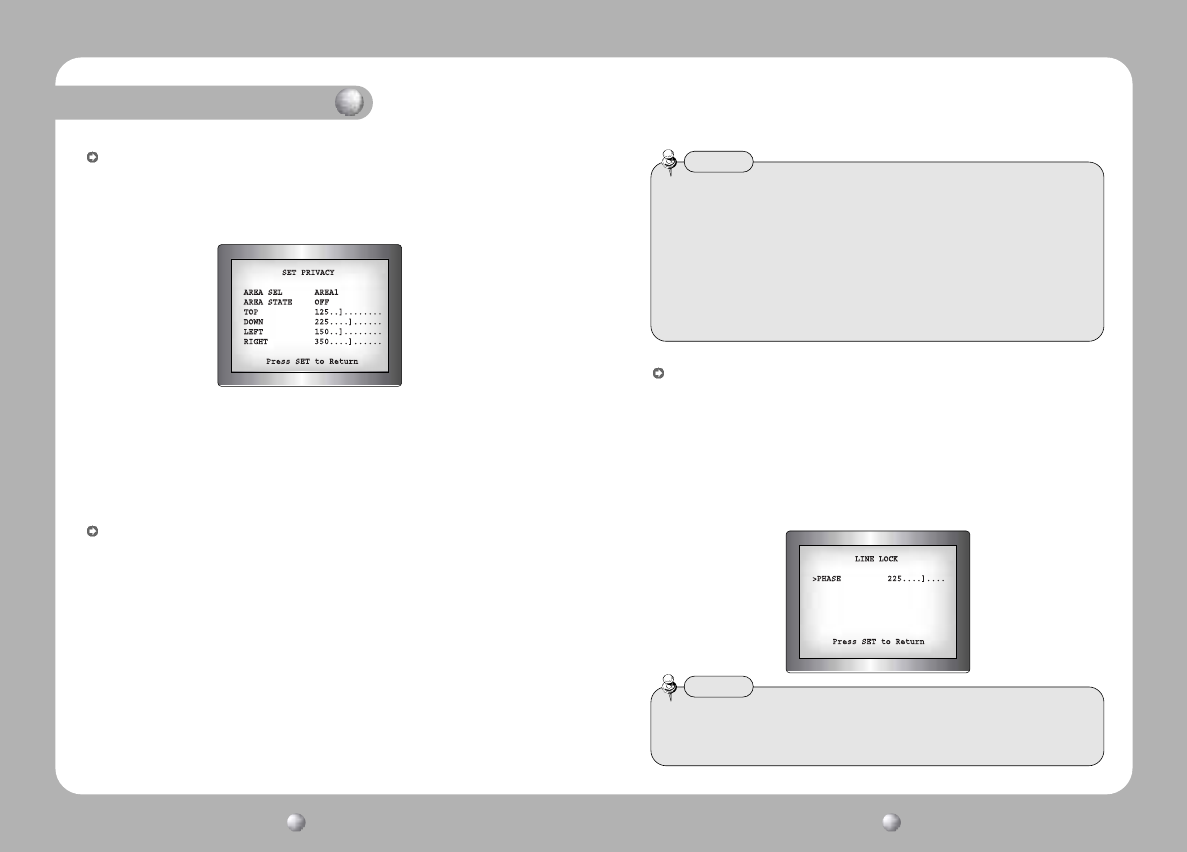
Operating Your Camera
COLOR CCD CAMERA User’s Manual
39
COLOR CCD CAMERA User’s Manual
38
PRIVACY: To mask area which you want to mask
- OFF: Deactivation
- ON: Privacy mode activated
· Press the SET button.
· 4 AREAS are selectable. Select the area you want(AREA1, AREA2, AREA3,
AREA4)
· Set AREA STATE ‘ON’ using LEFT or RIGHT button.
· Make the size of PRIVACY AREA by changing TOP, DOWN, LEFT, RIGHT
values.
DAY/NIGHT: choose color or B/W mode.
- COLOR : color mode
- B/W : B/W mode
- EXT : It enables user to control DAY/NIGHT mode by Inputing external
signal.
- AUTO : Under general condition, D/N filter is fixed at DAY mode, but under
low luminance condition, it change into NIGHT mode
automatically. The case of the opposition is also same.
SYNC : Two SYNCHRONIZATION modes are available INTERNAL and
EXTERNAL LINE-LOCK. In LINE-LOCK mode, it synchronizes the
video signal between cameras without a synchronous generator. The
line-lock synchronization is only used in the areas of 60Hz (NTSC
Models) / 50Hz (PAL Models).
- INT : Internal synchronization - LL : External line-lock synchronization
· If you choose ‘LL’, you can adjust the desired phase. Press the SET button.
-You can adjust the desired phase from 0 to 359.
• When the power frequency is 50Hz, you can not use line-lock mode(NTSC Models).
• When the power frequency is 60Hz, you can not use the line-lock mode(PAL Models).
• ‘Sync.’ mode is fixed to ‘INT’ in DC 12V input power.
Notes
• When you use Auto Iris Lens with Video type, do not set the level on the lens to too
low, Color/BW may not change over automatically.
• When Gain in SET UP menu is OFF, Color / BW do not change over automatically.
• If AGC is OFF, you can’t select AUTO mode on DAY/NIGHT menu.
• For the stable operation, whenever the mode is changed over between color and BW
mode, five setup menu buttons on the camera do not operate for about 3 seconds.
• It is possible to turn on or off the burst signal on B/W mode.
• The object may be more out of focus when using a source of near-infrared light
than using the visible light.
Notes


















